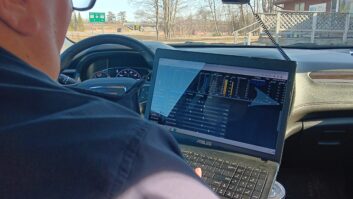
Fig. 1: Here is Aaron Read’s homebrew dish heater. The year is flying by, and even though you may still be in end-of-summer mode, many areas of the country will be experiencing snow sooner than you realize (or want to think about). Snow and ice are a pain for anyone, but especially if you maintain satellite dishes. So take advantage of the crisper fall weather and wax the surface of your satellite dish to make snow removal easier.
My preferred choice is marine wax. If your dish has a cover, however, application of a waterproofing compound is a good call, too. A popular waterproofing spray for camping is Kiwi Heavy Duty Water Repellant. You’ll find this product at most sporting goods stores, or find a link to information at radioworld.com/links.
The waterproofing compound helps guard against the cover freezing. After applying this or wax, it’s time for some instruction. Your on-air staff needs to know how to remove the snow properly, sweeping it out and not deforming the dish in the process. In the case of the dish cover, making sure no one tears the fabric.
Explain that the satellite signal will be lost if they bang under the dish to get the snow out. Rough treatment is not needed, especially when you have waxed the dish so the snow comes off easily. A long-handled squeegee works well, and the rubber edge will help minimize any damage to the dish as it is swept through the parabola. Periodic sweeping of the snow eliminates a large amount of snow from forming, in which case the weight can deform the dish.
* * *
Aaron Read handles technical matters for Rhode Island Public Radio, an NPR affiliate. They have the standard 3.8m C-band downlink, used for reception of public radio programming. However, due to limitations at his studios, they had to locate the dish at their North Providence transmitter site, about 3 miles away.
That has been problematic during the frequent snowstorms in Providence, as it doesn’t take much ice or wet snow to block the signal, even with a dish cover. Typically stations have a staff member on-call to physically sweep the snow off the dish cover, but that’s not practical for Aaron’s station, since the dish is located at a remote site.
Fortunately, the dish is only 10 feet from a two-story transmitter building, with a large, forced-air furnace to heat the building. Aaron cooked up a system to route the heated air from the furnace out to the dish, circulate it in the space between the dish cover and the dish itself, and return the air back to the building in a “closed loop” to increase efficiency and decrease dirt from being sucked into the building.
The idea is that the heat inside the space will melt any snow or ice attached to the cover, and wax on the cover lets it slide right off.
It took a lot of experimentation and more heat than Aaron had anticipated. Originally he had hoped that ambient air, drawn from near a ceiling heat vent, would be sufficient to melt the snow, but it wasn’t even close.
Eventually Aaron ran a six-inch-diameter, heavily insulated dryer vent hose; and connected it directly to the main hot air vent output of the furnace, raising the air vents to 130 degrees Fahrenheit and providing a much higher CFM — roughly 800 — out to the dish. (CFM stands for cubic feet per minute, a term used to measure airflow.)
The run is 50 feet to the dish (with an in-vent 300 CFM vent fan halfway through at the building wall), and through a reinforced hole in the dish cover. On the opposite side of the cover is another reinforced hole with a 25-foot insulated vent tube, six inches in diameter, and another vent fan sucking air back into the interior of the building.
This project was a major tradeoff in cost vs. expectations. Aaron could have spent $10,000 to $16,000 for a proper dish heater system, which would have a set level of expectations from the get-go. Instead, he spent less than $2,000 (and $500 of that was for a contractor to bore two holes into the building’s exterior wall, which was made of concrete blocks). The only downside to this operation was that it took several weeks of trying new configurations — and waiting for snowstorms — to test each configuration.
His only major change would be to center the inflow vent on the dish cover at the bottom, and place the return at the top. The dish is mounted on the side of a hill, and it was logistically impossible to do that.
In the end, though, it was sufficient to maintain service even during “Snowmageddon” in February this year, when whiteout conditions and snowfall rates exceeded two inches per hour. In other words, the project was a success.
Aaron’s finished product can be seen in Fig. 1.
Now’s a good time to inspect the outside of your site before winter arrives. Even if you aren’t using a dish, you never know when programming will want it pressed into service. So, things like the open feed in Fig. 2 should be corrected. Terminate the coax so that the connector can be reused, and waterproof the connector, even if it’s with electrical tape. At the very least, affix a heavy plastic bag over the feed horn assembly to keep it dry.
Contribute to Workbench. You’ll help your fellow engineers, and qualify for SBE recertification credit. Send Workbench tips to [email protected]. Fax to (603) 472-4944.
Author John Bisset has spent 44 years in the broadcasting industry and is still learning. He handles West Coast sales for the Telos Alliance. He is SBE Certified and is a past recipient of the SBE’s Educator of the Year Award.












